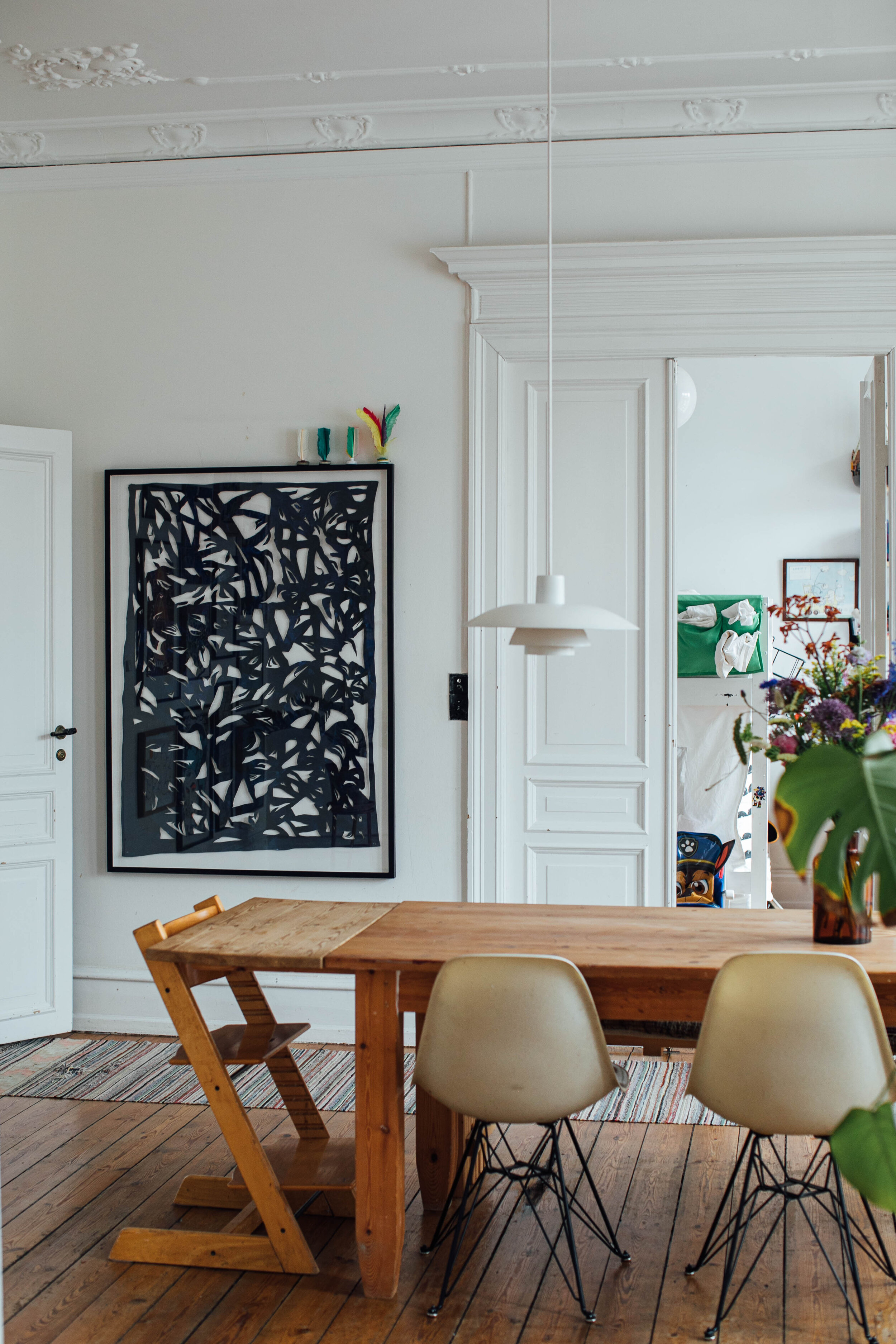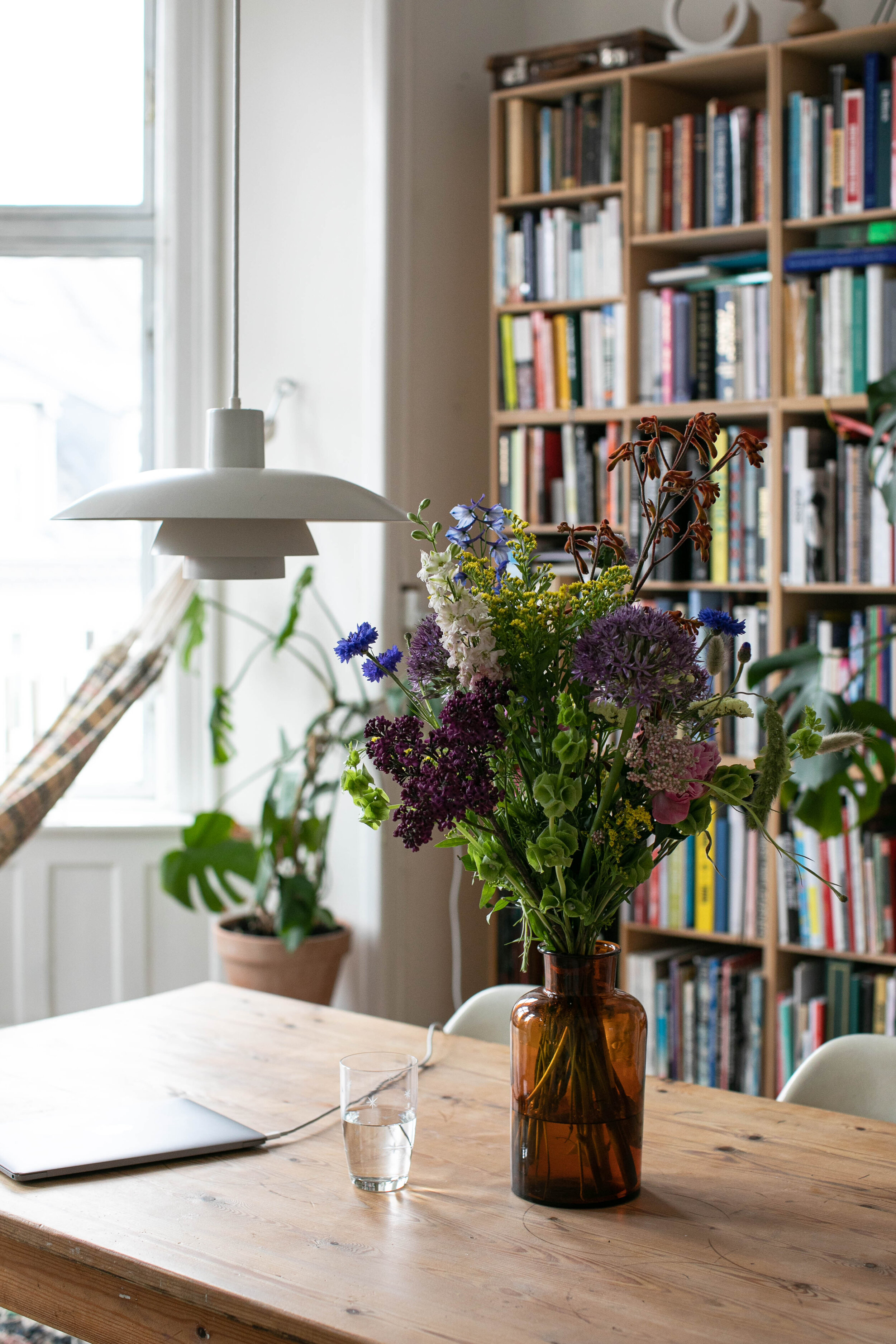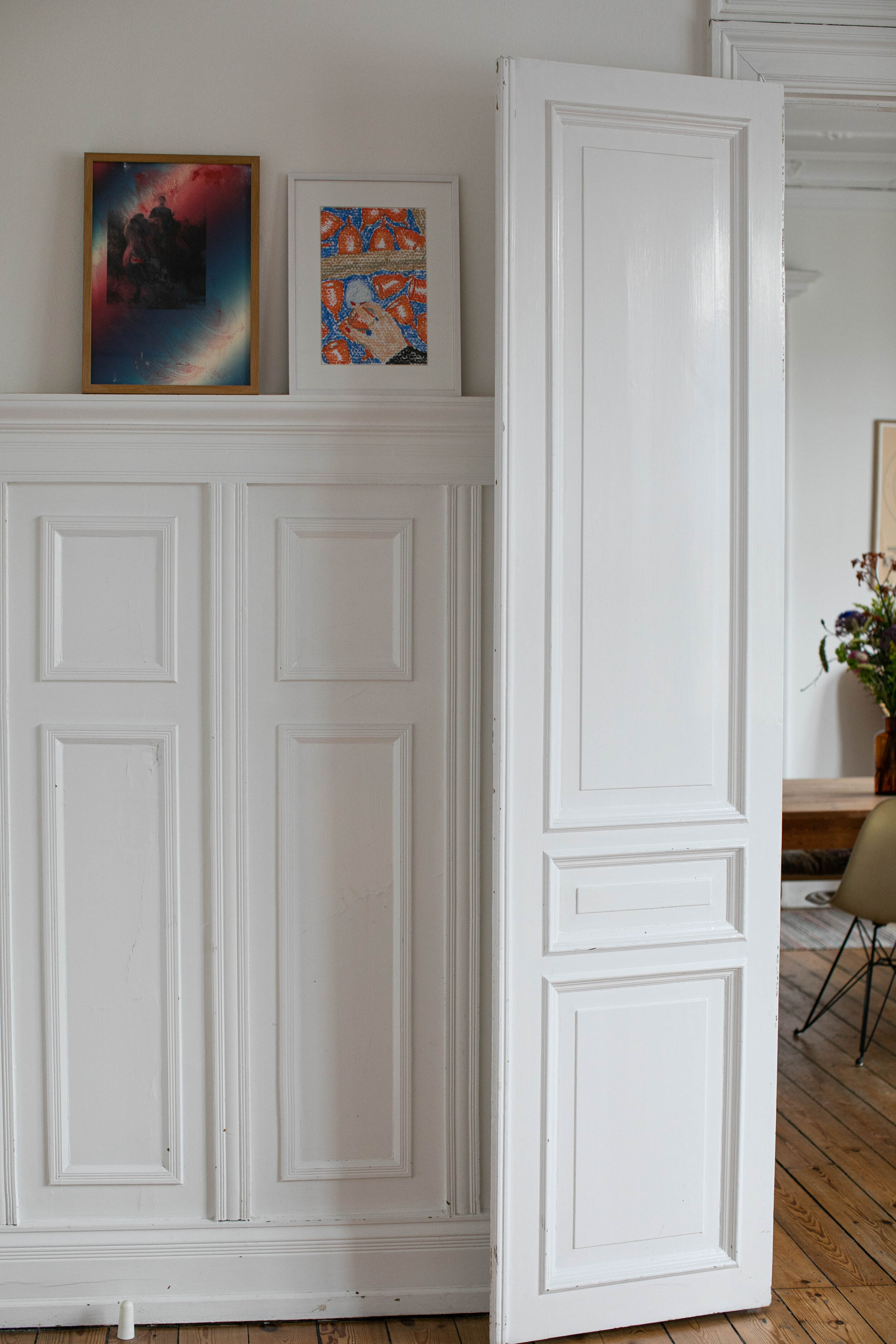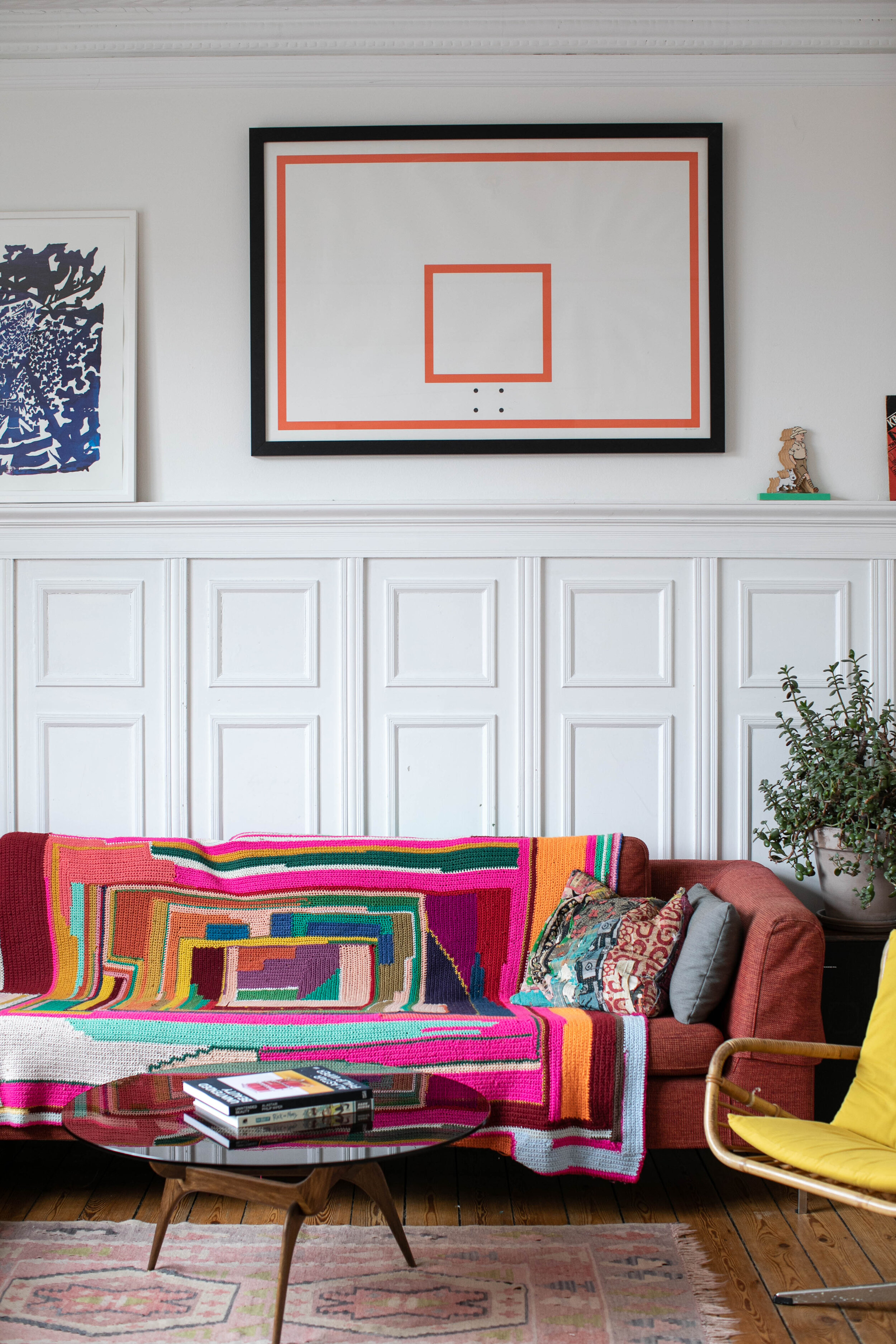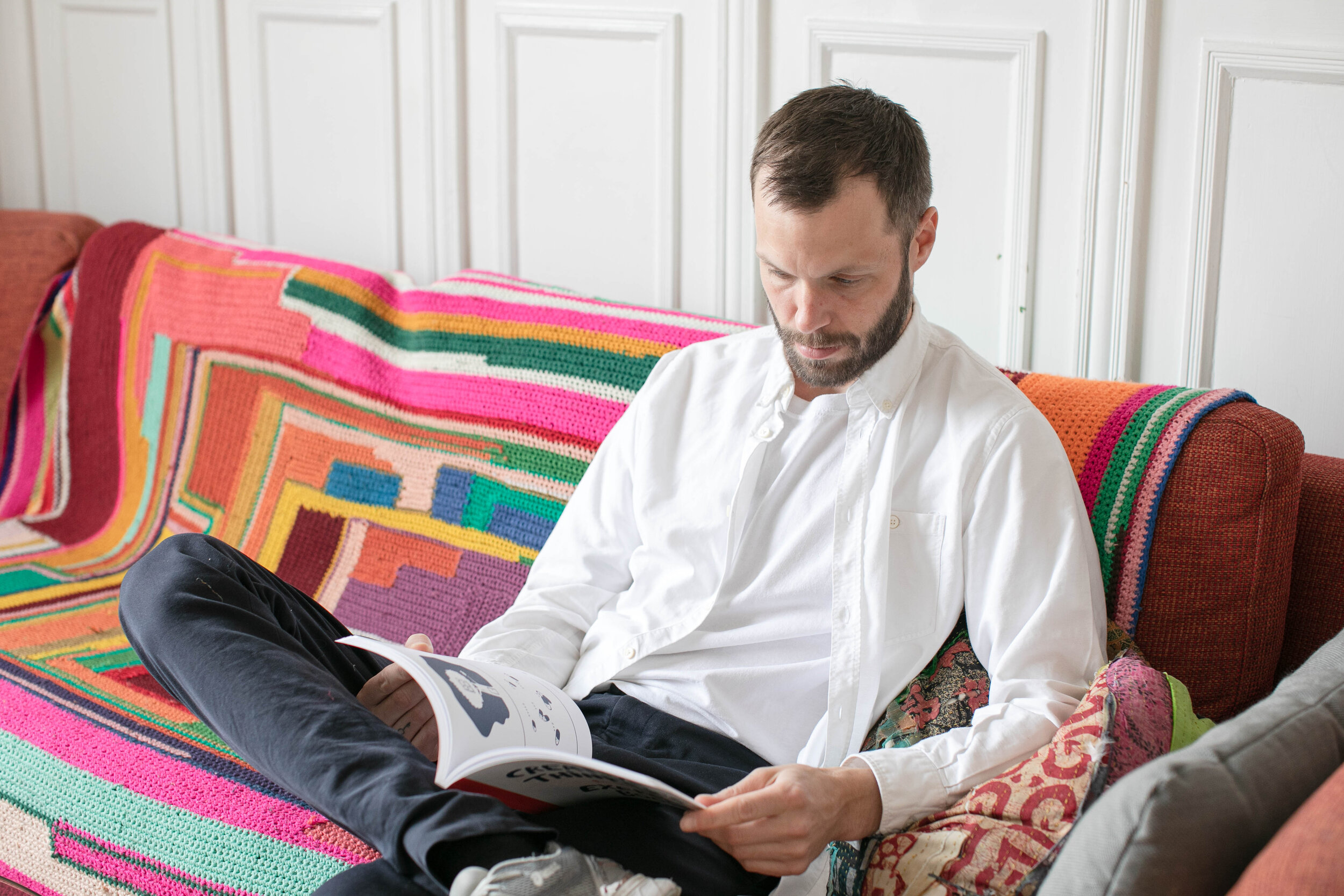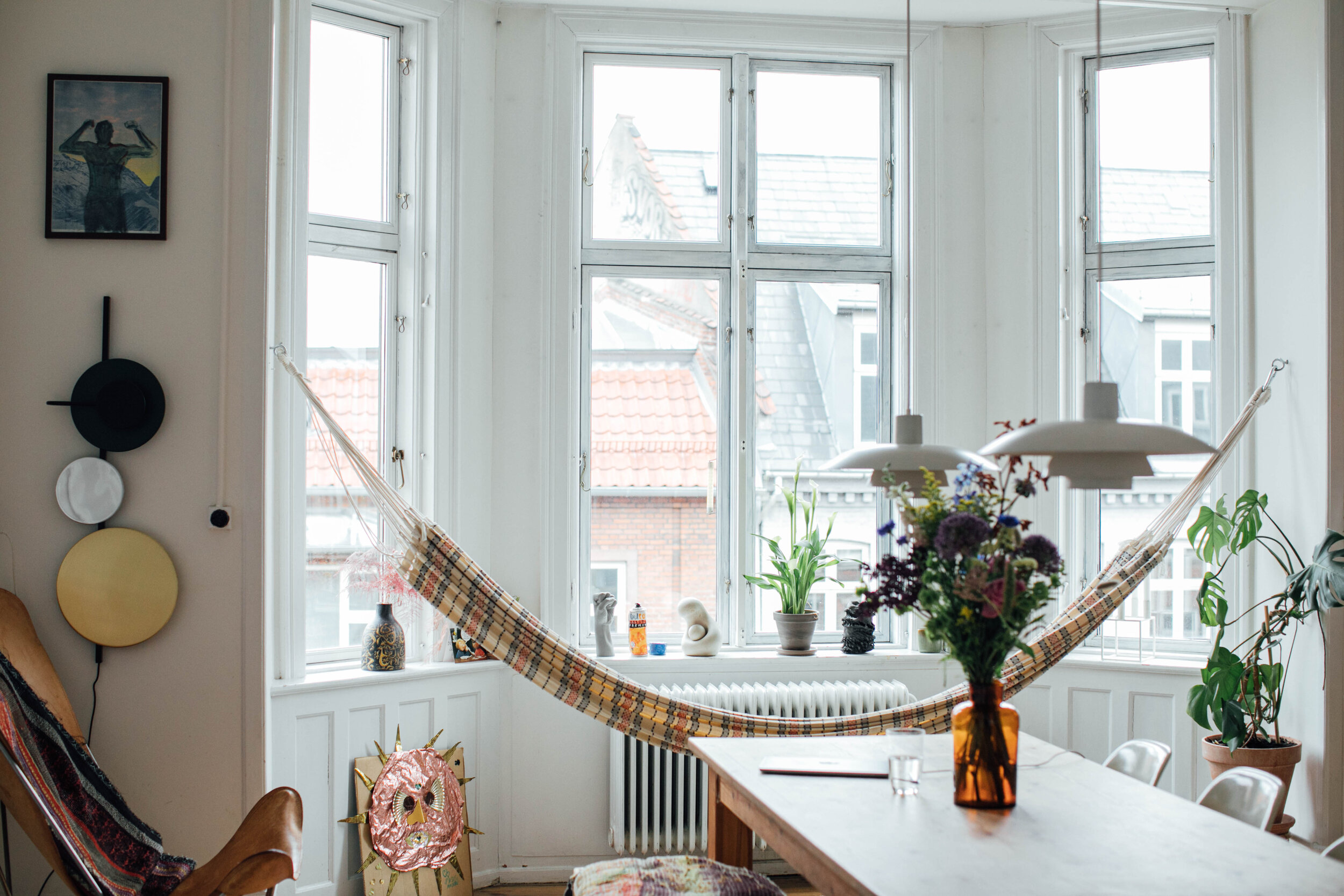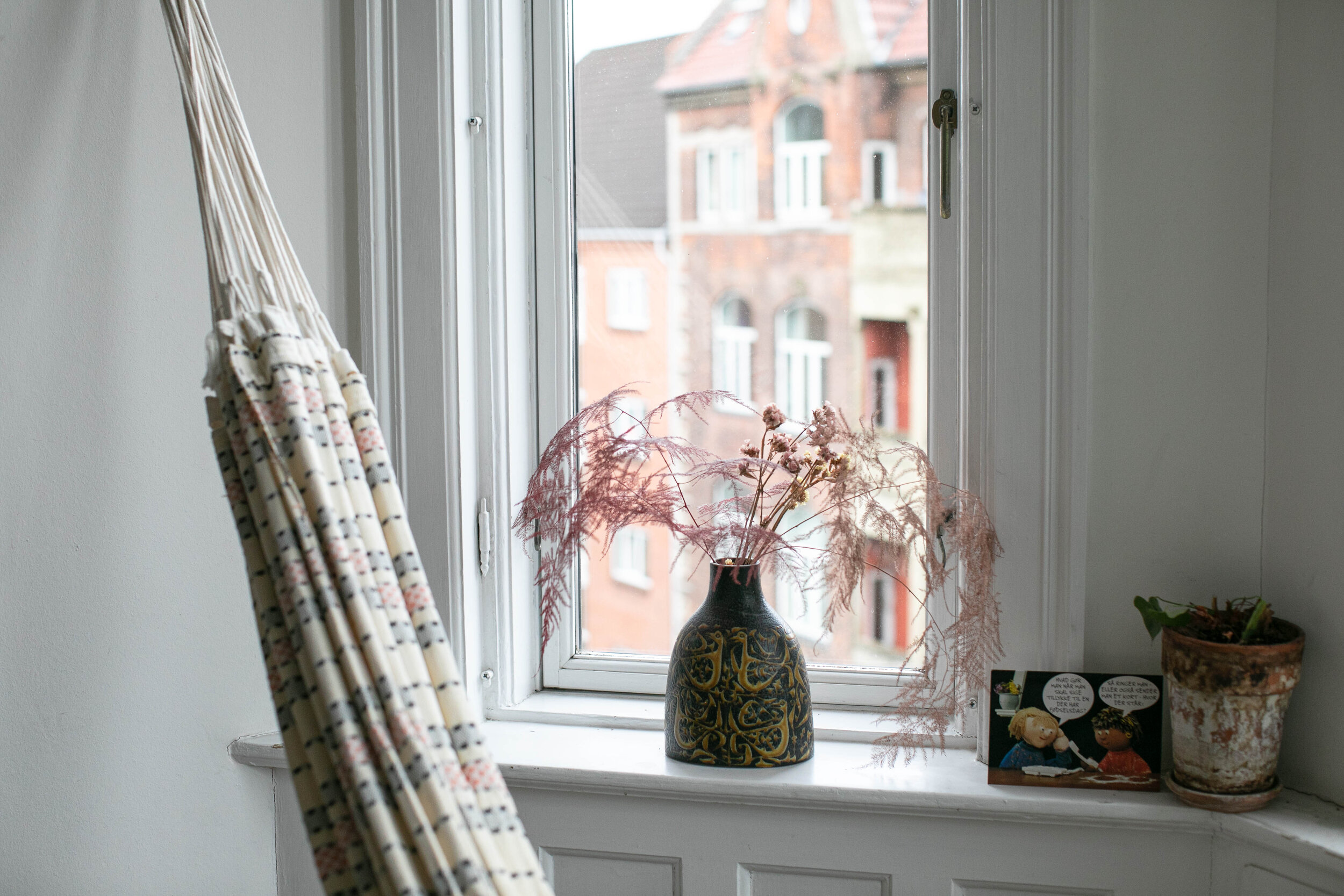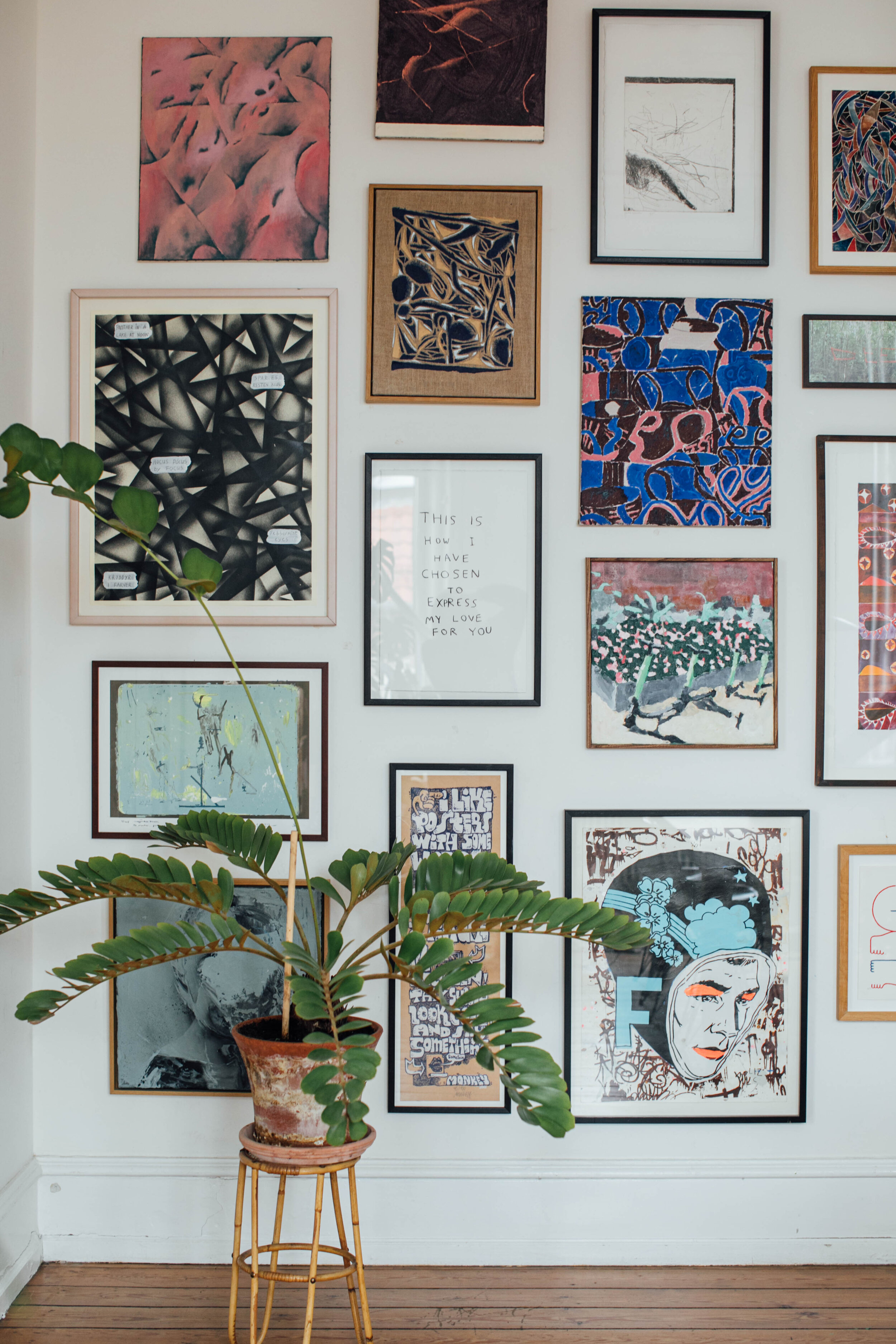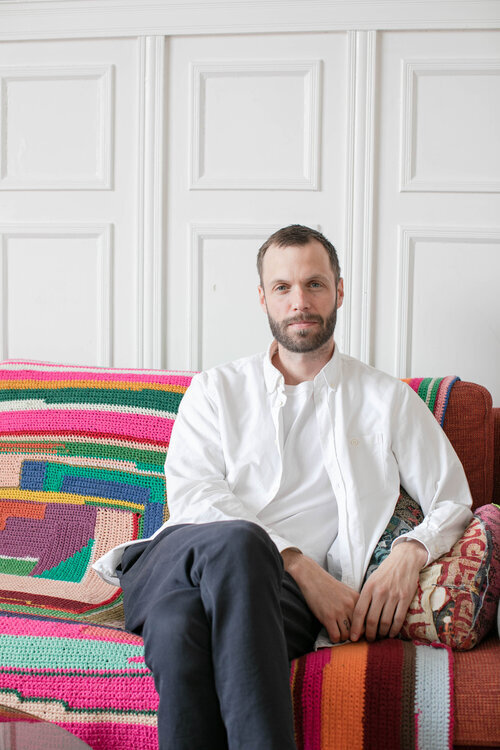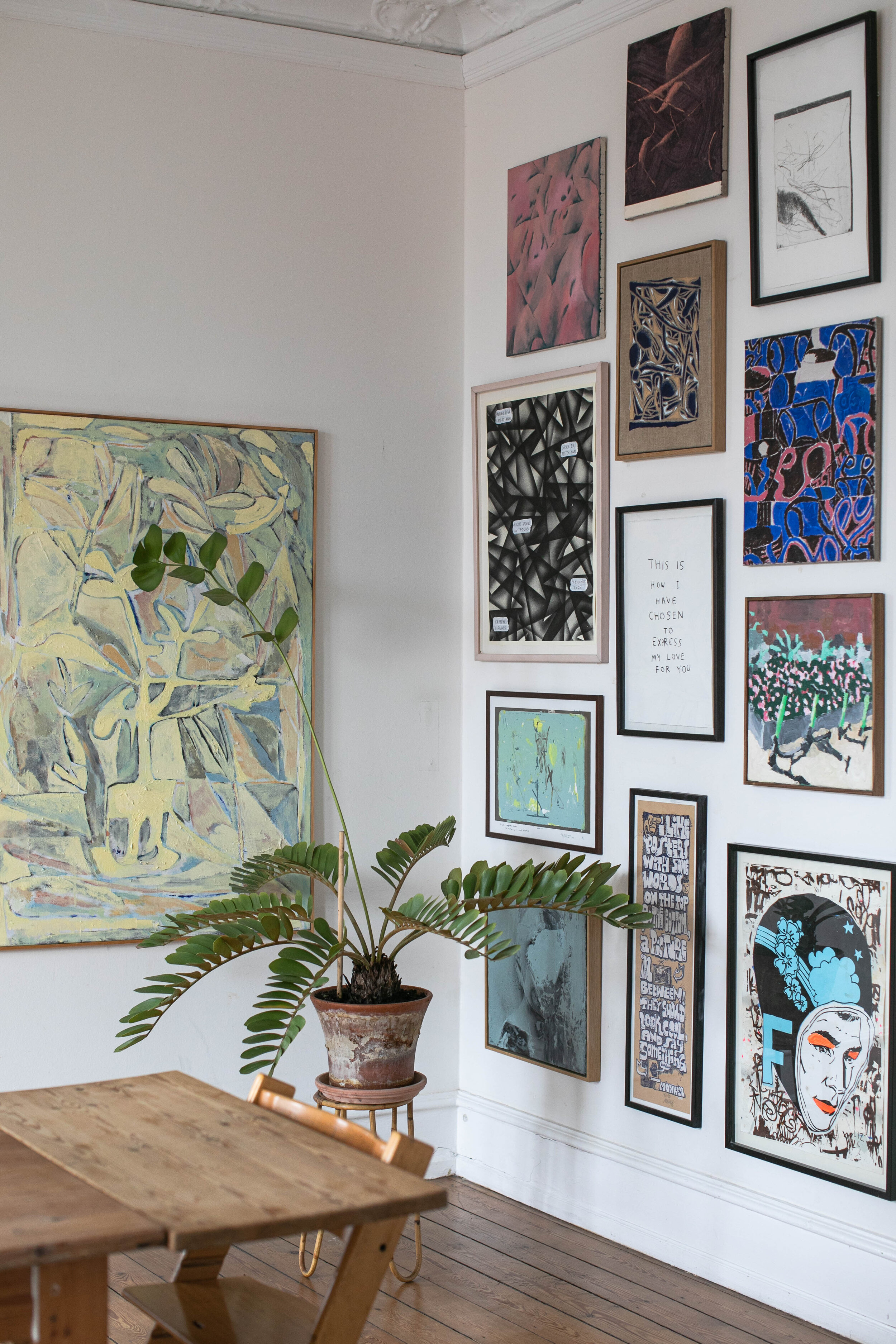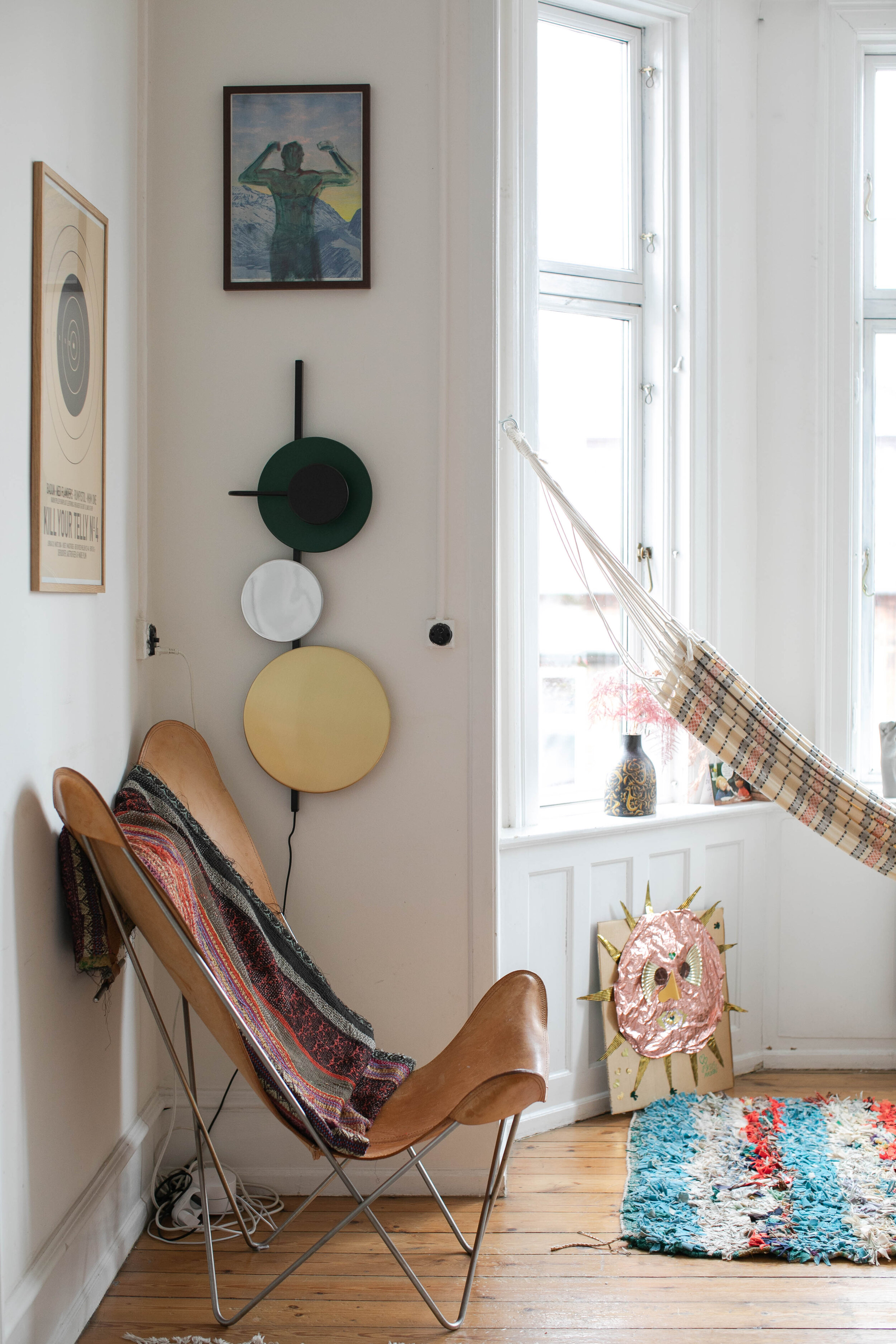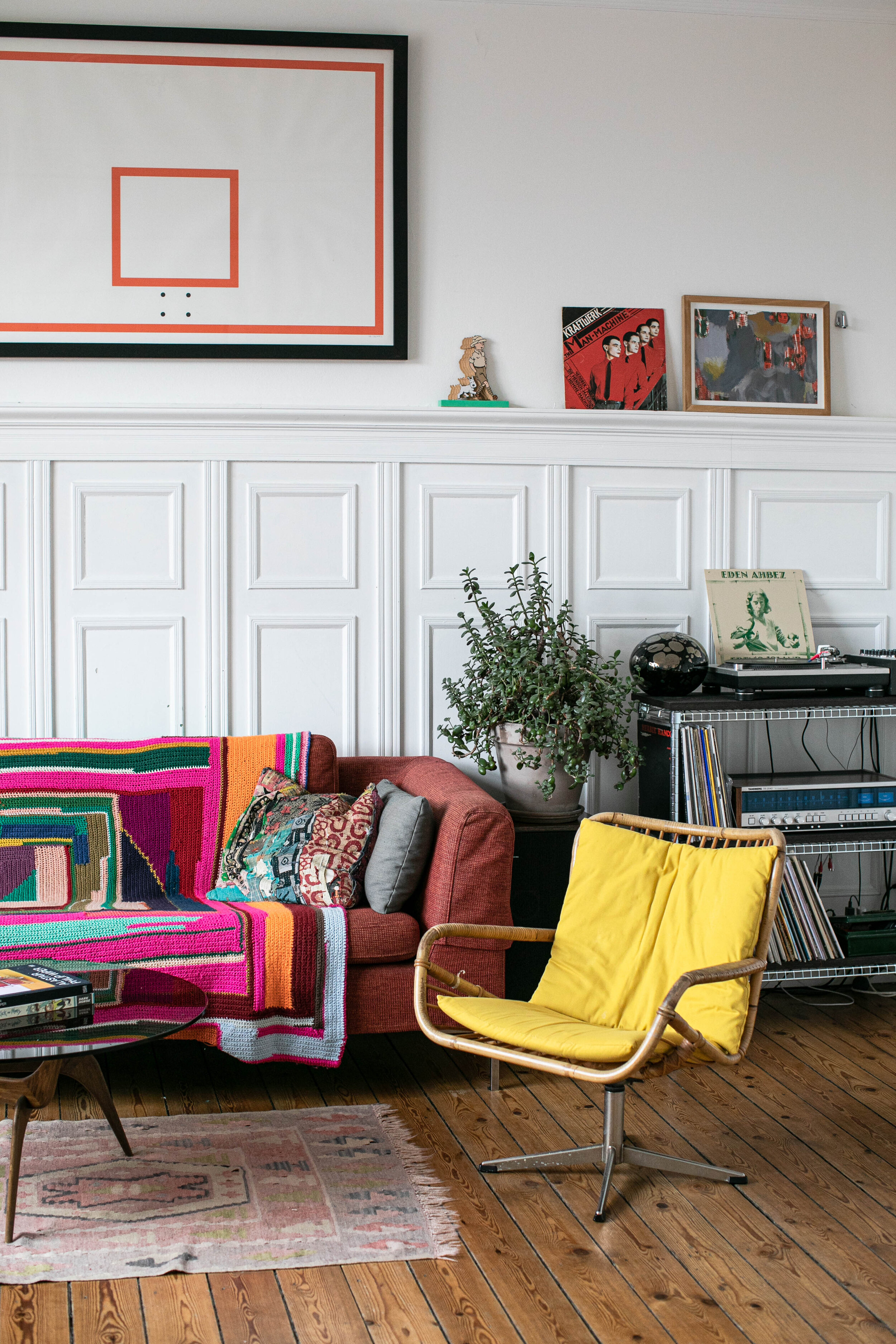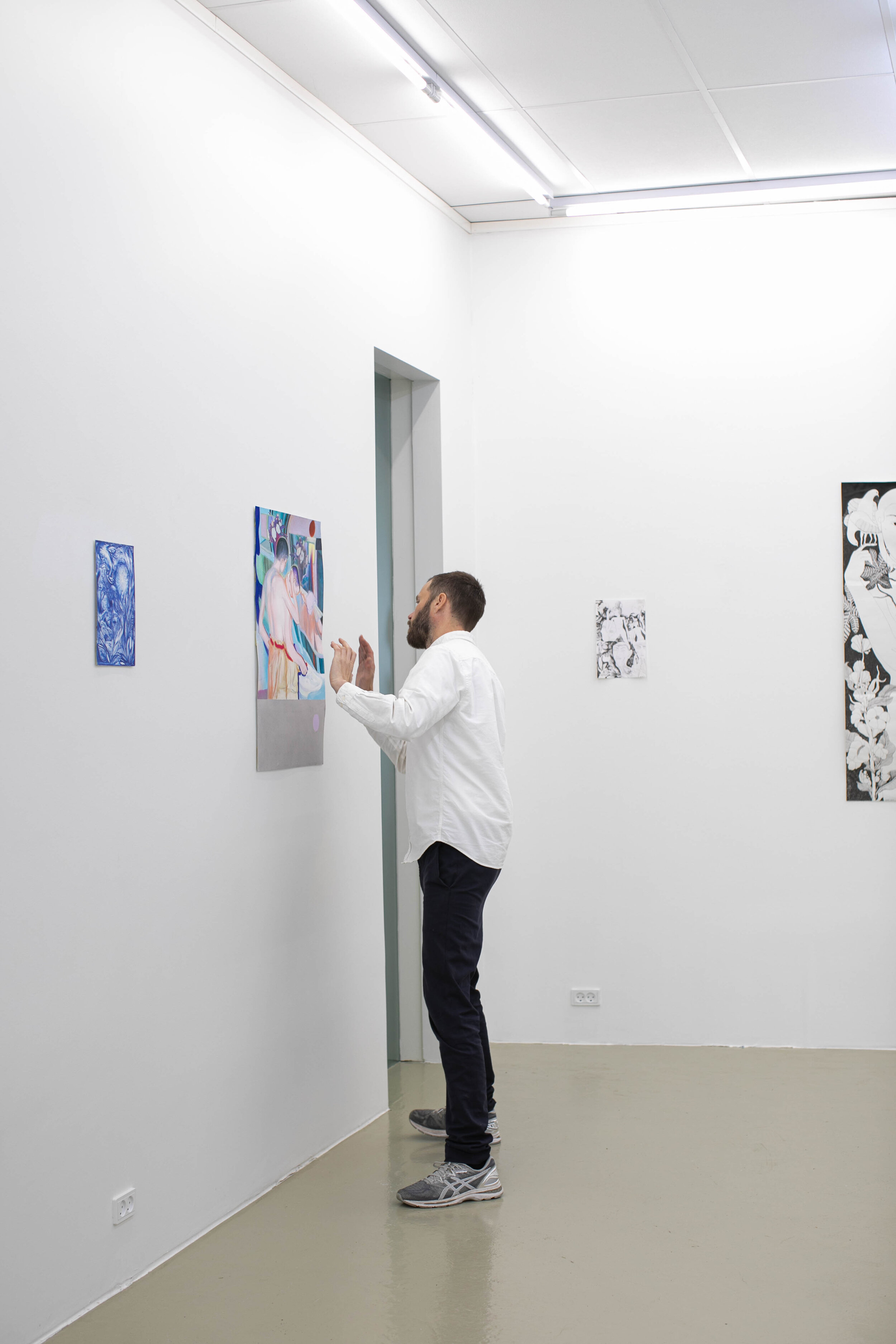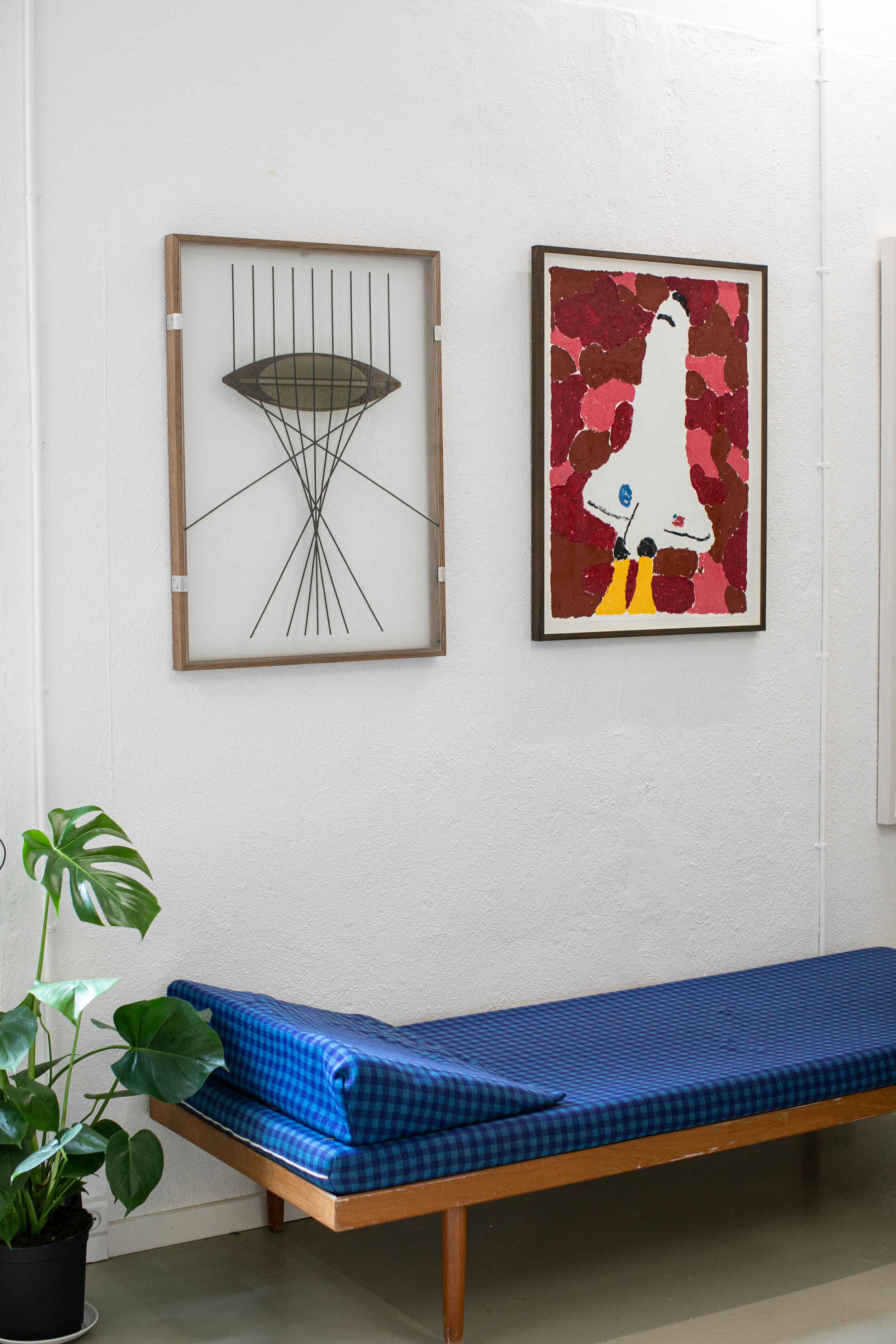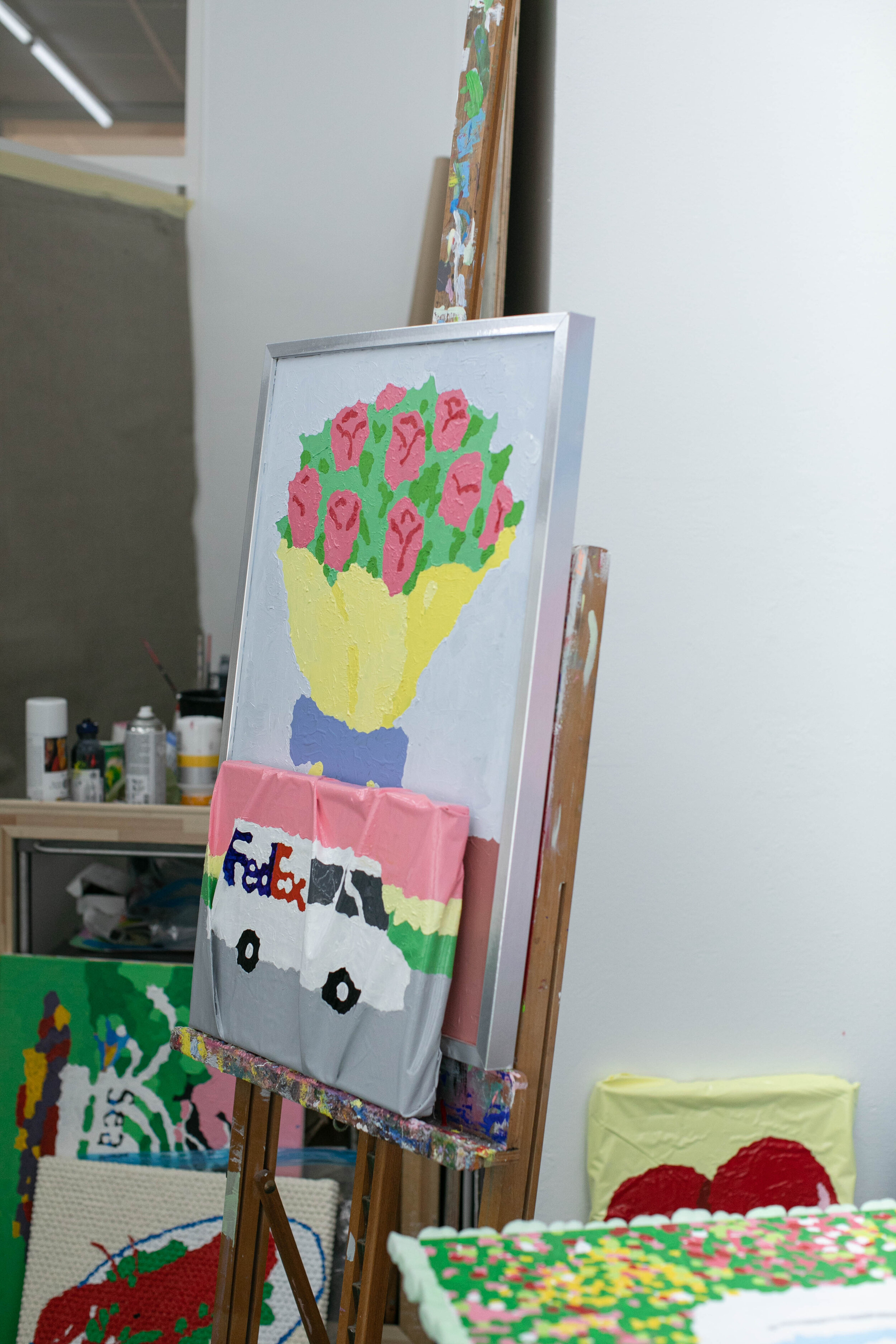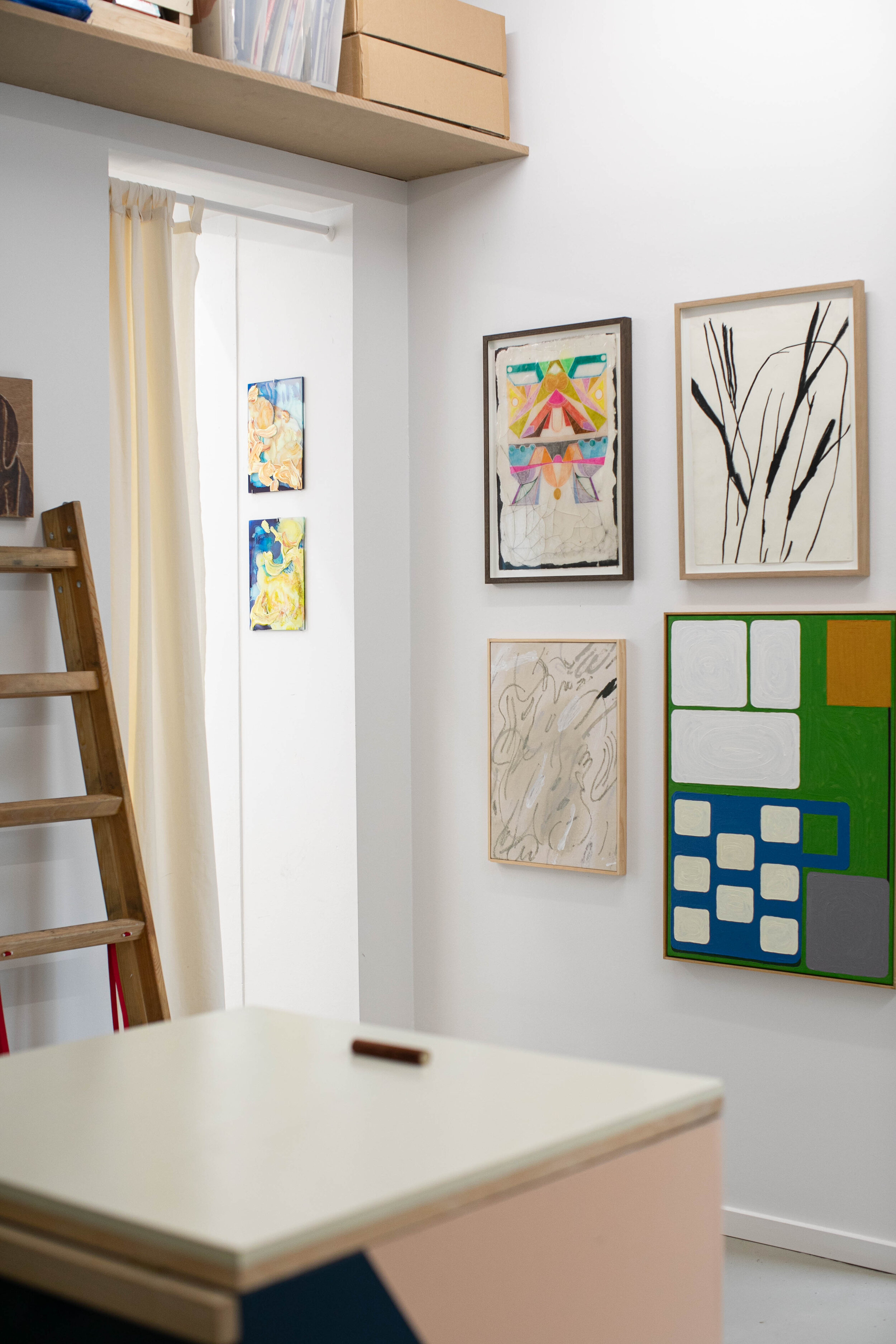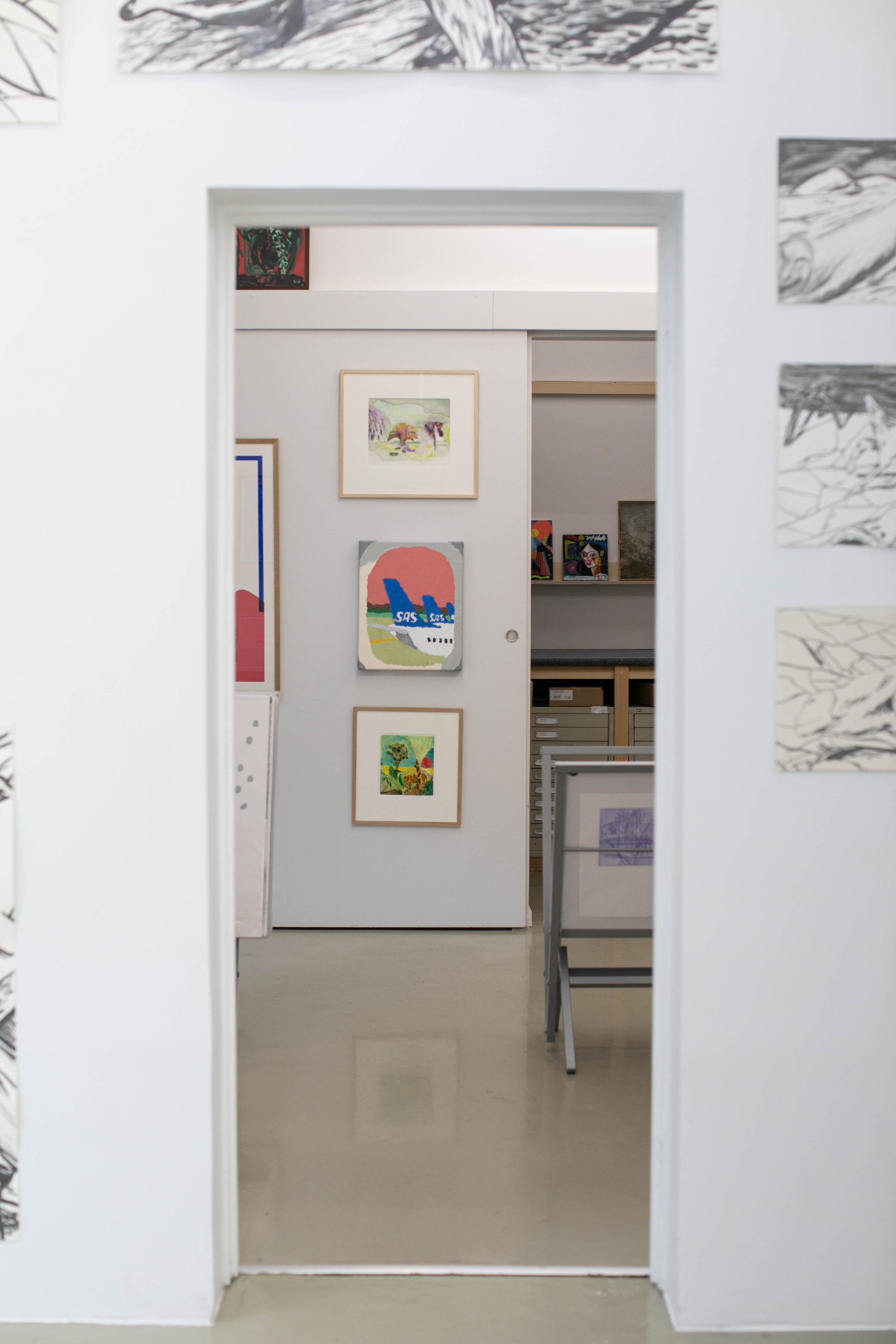MORTEN HALBORG-MØLLER
Interview Anne-Mathilde Bilodeau
Photography Marina Castagna
In 2019, Copenhagen’s bustling Nørrebro district got even hipper with the arrival of Morten Halborg-Møller’s new contemporary art gallery, Bricks. In addition to presenting exhibitions of talented local and international artists such as Anne Torpe and Jakob Steen, and accommodating two in-house artists, Halborg-Møller’s also running an art shop, Limited Works, right next door. By bringing together artists, art aficionados and community members alike, he has created a warm and unique space for creators and audiences to connect and flourish.
Résidence Édition’s Producer Anne-Mathilde Bilodeau got the chance to visit the Danish gallerist and entrepreneur at his flat, situated in the same neighbourhood as his gallery. Having fallen immediately in love with the concept behind Bricks, Bilodeau and the Résidence Éditions team wanted to meet the man who created such an exceptional space for artists in the Danish capital.
She was immediately put at ease by his gracious and friendly demeanor, reflected also in his bright, spacious home. While one of his kids played in the next room, they chatted about his projects for a good hour in his living room, surrounded by distinct pieces of modern artwork and designs. Always thinking one step ahead of the rest, Halborg-Møller generously shared his wealth of experience and innovative ways of pushing forward collaborative projects, through which he has supported a multitude of talented and upcoming artists.
With the days of dropping in on people’s homes a distant reality for many of us around the world right now, we caught up with him once again – from a distance, of course – curious to know how the current pandemic was affecting his new gallery and the art world at large.
We’ve put together both interviews in hopes that artists and entrepreneurs alike will be inspired by his conception and (re)creation of communities and spaces, something that will undoubtedly require much thinking and re-thinking in the months and years to come.
As an artist, DJ, and entrepreneur, being a conduit and connecting people seem to be at the core of everything you do, is that right?
I’ve always been busy setting up loads of different projects and collaborating with talented people, something I love to do. Creating the ideal platform on which artists can thrive has been the common denominator for all of my projects, which is why I worked with nightclubs, events and restaurants before devoting myself completely to the art scene. In 1971, my dad helped found the Roskilde Festival — the largest music and arts festival in Northern Europe — and growing up in this environment definitely influenced me and made it very natural for me to work in the art and culture world.
At Résidence, the idea of “place” is central to our work: a place to connect, virtually, physically and conceptually. What does “place” mean to you?
I’m a little restless by nature and often long for new adventures. Before I had my kids, I constantly wanted to get away. During the nineties, when I was making street art and enjoying a successful career as a DJ, I remember sitting at Prospect Park in New York with my dear friend, artist Aiko Nakagawa, and making fun of the boring young couples walking by with their strollers. Determined to keep the world as our playground, we agreed that happiness was to be on the run and not conform to the status quo. But as I grew older, I suddenly wanted to settle down myself. Copenhagen was where I ended up meeting my wife and starting a family, and now this is where I have my network and feel at home.
Where did you come up with the name Bricks for your gallery?
The old school way of naming a gallery by one's last name just wasn’t my thing and didn’t mesh with the co-creative vibe I wanted to instil as an integral part of the space. I chose the name Bricks because I see the gallery as an organism in which the artists, art works, guest curators, coworkers and visitors are all necessary components that come together to build something beautiful. The name also came to me naturally since the gallery was founded in a public housing complex made of simple red bricks.
Going from a virtual to a brick-and-mortar gallery seems somewhat counterintuitive in this era. What was the main motivation behind the creation of your gallery? Was it partly to rediscover the human contact you had in your DJ years?
Through my project Limited Works, which focuses on affordable, paper-based art, I met many talented artists who needed a worthy platform to exhibit on, and which I wanted to supply. Limited Works succeeded in making art more accessible for regular customers and I still get excited when I think about how many uninteresting “design posters” hanging in people's homes we replaced with real graphics throughout the years. Having started the online shop and boutique in 2011, I soon grew weary of store management, and opening a bigger space was a natural next step for me. I also longed to collaborate more closely with artists and create memorable exhibitions that would influence their growth. At the same time, I wanted to challenge the traditional concept of a gallery. When I got the opportunity to take over SUPERFLEX’s previous studio a few steps from the store I had, it seemed like the perfect fit.
Your gallery is in an unconventional part of town: by physically distancing your gallery from the expected neighbourhood, were you also distancing yourself from more conventional galleries? Was it a statement?
This might not seem logical to some, but with Bricks I’m doing the same I did when I entered Copenhagen’s techno scene about 20 years ago. Back then I had just started out as a techno DJ and faced a pretty aloof environment with many unwritten rules. So, I started my own club concept, Kill Your Telly, where everyone was welcome. We didn’t just share flyers in the record stores where the established techno crowd hung out, but we also invited new crowds in by making street art, doing guerilla marketing and distributing flyers to the city's high schools. The concept was inclusive and became a success: not only did it open up the scene to new audiences that became hooked on electronic music, it also brought in more work for us DJs.
“With Bricks I hope to make art more accessible for those drawn to the art world but who have a hard time getting into it because they feel like they’re not knowledgeable enough.”
With Bricks I hope to make art more accessible for those drawn to the art world but who have a hard time getting into it because they feel like they’re not knowledgeable enough. Traditionally, the Nørrebro neighborhood has been associated with bars and multiculturalism but sadly with its share of social challenges, as well. However, it’s also a very open minded and exciting area with huge potential and tons of culturally interested consumers. Within the gallery, we reopened the Limited Works shop, as well as an active studio space. The studio is now occupied by Mathias Malling Mortensen and Luca Bjørnsten, two of the gallery’s in-house artists. The combination of multiple components within the same space creates a synergy and unique atmosphere – and gives visitors more than one reason to stop by.
How do you see this period of ‘social distancing’? Do you see new opportunities arising? And how does it impact the traditional business models in the art industry?
The current crisis is accelerating an already growing tendency in which galleries no longer only focus on their physical spaces but also bring art into the digital realm. The ones who didn’t already have a strong online presence, well-run Instagram account, or more direct and transparent shopping opportunities have suddenly been busy setting it up. As a young gallery, we have embraced new technologies from the very beginning by posting 3D tours on our web page as a supplement to the physical exhibitions in the gallery. A big share of this new generation of international collectors is discovering these new web-based services and would rather buy art online. Therefore, we need to use digital platforms to perfectly complement the physical realm, even if they neither should nor could completely replace the physical encounter with art.
How do you select the artists with whom you collaborate? You do not have a typical background in fine arts, does it modulate your perspective on their work?
It often starts off with a hunch, an undefined attraction to the artist's practice, where the piece and artist’s universe intrigue my senses and pique my curiosity. I also need to be able to imagine myself collaborating with the person for many years, so chemistry is key. If the chemistry is bad, it’s impossible to create a sustainable collaboration, even if he or she creates brilliant art. The pact made between gallerist and artist is a very sensitive one; artists invest blood, sweat and tears into their practice, and I see it as an important responsibility to take on the role of representing them.
“The pact made between gallerist and artist is a very sensitive one; artists invest blood, sweat and tears into their practice, and I see it as an important responsibility to take on the role of representing them.”
As a curator, how would you say you connect with the artists, the human behind the art, on another level?
I consider the artists as individuals for whom I need to do my very best to contribute to their success. But they are also my colleagues who I consult and ask for advice — sometimes these professional relationships can even develop into amazing friendships.
How would you describe the art scene in Copenhagen?
Denmark is a small country and our art scene tends to feel a bit like a small pond, but the scene in Copenhagen has developed a lot in the past 10 years. It’s slowly opening up to the outside world and with the help of Instagram, the artists now have an easier time reaching beyond the country’s borders. The city now hosts two great art fairs, CHART and ENTER. Other than that, paintings have really made a comeback!
ARTICLE PUBLISHED IN MAY 2020
Artwork by Linda Lazer / Photo: Courtesy of Morten Halborg-Møller
What is hanging on your walls right now? My latest addition is a square piece of minty green petroleum wax, created by the Norwegian multidisciplinary artist Linda Lazer. It has a delicious surface that makes one want to bite into it.
What is your all-time favourite piece of art? Ouch that’s a hard one! I’ll never stop being fascinated with Cy Twombly´s minimal masterpiece “Thyrsis” at Hamburg’s Bahnhof. Another work I’m completely obsessed with is Per Kirkeby´s oil painting “Vinterbillede” (winter painting), which inspired a brilliant documentary in which one gains insight into the mind of the artist (one of Denmark's greatest painters) by following the creation of one of his paintings from the very first brushstroke. It’s fascinating, and I recommend watching it.
What are you listening to right now? The album Utopia by Bremer/McCoy — a Danish duo playing melancholic and meditative-jazz.
What is your favourite food? The food I enjoy together with my family and friends.
Natural or conventional wine? Preferably natural. Except for Rosé during the summer, that one I don’t mind being conventional — as long as it’s ice cold and from Provence haha.
Tales of mere existence
This May, with shops and galleries in the Danish capital finally able to open their doors once again, Bricks Gallery held an exhibition fittingly entitled Tales of Mere Existence, a perfect reflection of the times. With several cancellations and postponements due to COVID-19, and after several weeks of having been in shock from going into lockdown after having so recently opened his new space, Morten Halborg-Møller decided to ask the young but exceptionally talented Danish artist Søren Arildsen to curate an exhibition of “quarantine drawings” from local and international art academy students who are part of a new wave of budding and exciting visual artists in Copenhagen. With the students having been denied access to their schools and studios and forced to work from home, Halborg-Møller and Arildsen were interested to see what would come out of this situation, viewing the many drawings both as an embodiment of these artists’ frustrations and despair but also as a positive output and beautiful result of countless hours of creative immersion.
While digital technologies are allowing art and exhibitions to increasingly go online and reach wider audiences, this intimate and unique exhibition was proof that they will never completely replace the physical experience. Bricks sprang back to life and hummed once again with its usual warmth, the gallery filled with people eager to both take in and share the experiences of solitude they had lived during these unprecedented times.


